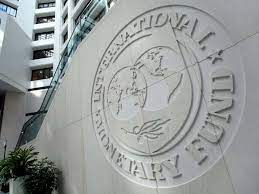‘This is a cost-push inflation… it’s a rise in costs of fuel, which is something that is used in everything else. It’s used in the production of many many other goods and services, it’s used in transport, and so it doesn’t just affect the prices at the pump, it actually affects all others prices in the economy. The problem is that then governments say, oh well, what we have to do is to get the central bank to tighten monetary policy, to raise the interest rates. That’s not the problem, that’s not the solution, that doesn’t affect the cause of inflation, so you really have to think of different measures in this situation. …The prices themselves have gone higher than you would expect given the actual impact on supply… and that’s because there’s been very feverish speculative activity in what are called the commodity futures markets.’ – Excerpt from a recent interview by Jayati Ghosh, on ‘Democracy Now’
According to Oxfam, in 87 per cent of the programmes of International Monetary Fund (IMF) during the last two years– which are also the years of the pandemic, and its recession-causing effects, especially on developing countries that were made to suffer from vaccine apartheid, and low level of debt moratorium/relief– countries in the programme were asked to adopt austerity policies.
This does not make much sense, not only because at the same time, the IMF encouraged countries in the global north to provide stimulus to their economies– where both quick and adequate provision of vaccines, and more than $13 trillion of stimulus led to much quicker and more significant economic recovery than developing countries overall– but also because developing countries needed to give stimulus to its people, and improve their purchasing power in the wake of firstly, supply constraints by OPEC+ group of countries overall had led to a high price of oil, where from a dip in oil prices in the first few months of the pandemic, it had reached very high levels of crossing $130 per barrel, to coming down to somewhat below $100 per barrel as the USA for instance released significant quantities from its oil inventories in the wake of the war in Ukraine by Russia.
Secondly, developing countries, many of which were already facing a difficult debt situation, during the pandemic had to provide most of whatever stimulus/welfare spending, and health sector expenditures that they could make, from their own resources, given very little debt moratorium/relief was provided by creditors, including multilateral institutions.
It is important that IMF does not stress upon programme countries like Pakistan to adopt a strong pro-cyclical policy stance.
Thirdly, much stimulus could not be provided by developing countries, because developing countries received no significant amounts in enhanced allocation of special drawing rights (SDRs) by the IMF. So, when in last August IMF did provide an enhanced allocation of SDRs to the tune of $650 billion, most of it went to rich, advanced countries, since it was inappropriately allocated, given the situation of the pandemic at hand, on the usual practice of distributing on the basis of SDR quotas of member countries– richer countries with more contribution to the IMF pool of resources have larger quotas– when it was the developing countries who needed the lion share.
Hence, for instance, Pakistan only received $2.75 billion in enhanced SDR allocation. Having said thwt, the possibility of relocation of enhanced SDR allocation from developed countries to developing countries through a recently established window in the shape of he Resilience and Sustainability Trust by the IMF could help fill some of the financing gap of developing countries, yet the main achievement would be if the IMF could persuade US Congress to pass the bill regarding allocation of $2.2 billion in enhanced SDR allocation. Moreover, during the unusual times of the pandemic, any possible subsequent allocation of enhanced SDRs should be done in a way that the countries which need such a support the most, receive it accordingly.
Here, it needs to be mentioned that the financing needs of the developing countries were much more than they could receive, where also such needs were not reduced through any adequate level of debt moratorium/relief, or through provision of any significant amount under climate finance, something which rich countries had committed to during the 2015 Paris Climate Accord, indicating that annually they would provide $100 billion to developing countries as climate finance. The amount of financing that developing countries needed to have for providing stimulus, improving debt sustainability, boosting purchasing power, and reducing the imported component of cost-push inflation, was indicated, for instance, by United Nations Conference on Trade and Development (UNCTAD) in last December, to be between $2 and $3 trillion.
Hence, in this context, it is important that IMF does not stress upon programme countries like Pakistan to adopt a strong pro-cyclical policy stance, since for instance, enhancing policy rate– which being close to zero real interest rate, is already very high and needs to reduce significantly, given inflation is mostly being driven through the cost-push channel, and not through the demand-pull channel– increasing overall tax/tariff burden, and reducing/eliminating subsidy, especially on oil, and essential food items, would not only most likely enhance inflation, given as indicated it is primarily cost-push caused, on the other hand will also significantly hurt the economic growth momentum, which reached, with great difficulty some reasonable level of 5 per cent plus last fiscal year, not to mention the overall catastrophic of this slow-down and high inflation on managing very difficult debt, poverty, and inequality situation.























